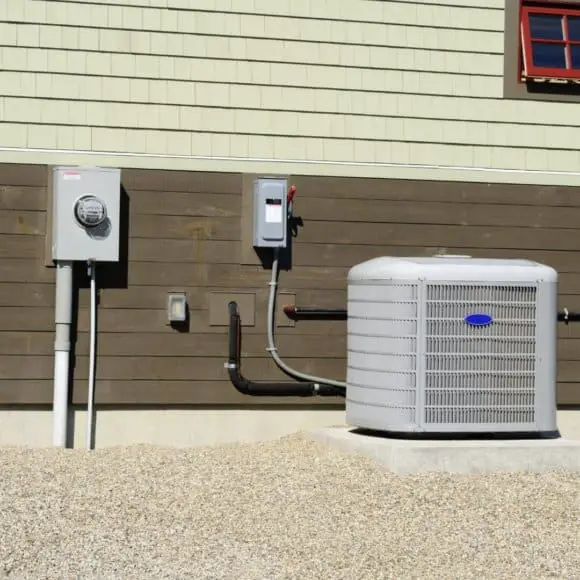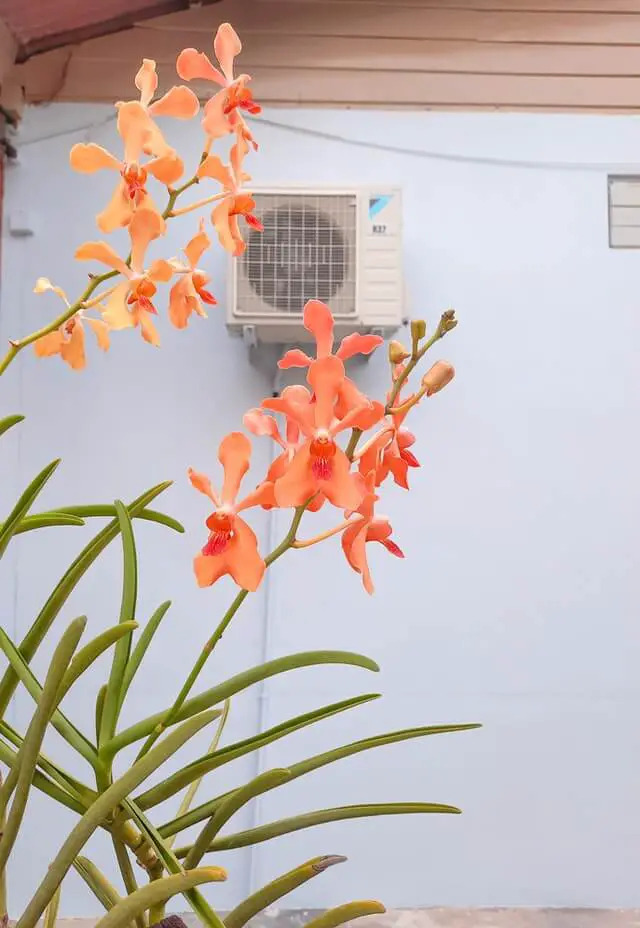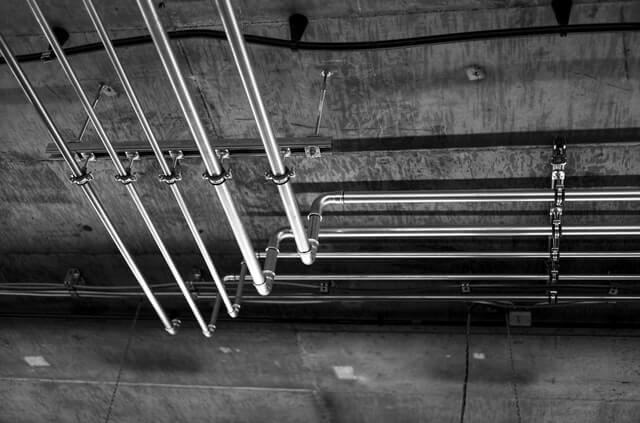For years, the Rheem vs Trane debate has loomed in customers’ minds, and it remains to do so.
You could be upgrading your home, moving to a different one, or replacing your existing conditioning systems. Several reputable companies can give you the particular air conditioner you require. However, installing an ac unit is a major undertaking, and you should conduct a thorough study before proceeding. It can be quite challenging to choose the correct AC and ventilation systems as a homeowner.
With thousands of possibilities on the market right now, you may be having trouble deciding which ones are most suited to your requirements. In heating, ventilation, and air conditioning equipment, both generic and name-brand enterprises have made a name for themselves. However, Rheem and Trane are two organizations that have won the trust of their customers.
Both HVAC brands have certain noticeable advantages and disadvantages. While Rheem is marginally less expensive, Trane has a substantial advantage in terms of features and offers a longer warranty, among other things. When buying a new HVAC system, it is up to the customer to pick which criteria are the most important to them.
In this blog, we’ll compare Rheem and Trane, highlighting the advantages and disadvantages of each brand based on certain major consumer decision-making criteria. Customer service, system longevity and durability, efficiency, environmental issues, and affordability are all factors to consider.
HVAC System definition

Before discussing which brand is ideal for your needs, it’s critical to clarify what an HVAC system is. HVAC refers to heating, ventilation, and air conditioning systems. It’s a blanket word for a collection of technology devices that work together to control the quality and temperature of the air in your house or indoor environment.
Heaters, ventilators, and air conditioners are all included in the HVAC category. It should be mentioned that air conditioning units are the most commonly referred to product when the word HVAC is used.
Within the United States, there are various brands and makers of HVAC systems to choose from, including York, Goodman, and Lennox. However, as previously said, Trane and Rheem are the market leaders. This blog will be helpful in deciding which model is ideal for you as a consumer.
Essential Features of an Air Conditioning System

- Thermostat:
You can manage the cooling output of an AC unit using the thermostat. A digital thermostat displaying the specified temperature and the actual temperature will be found in the middle to higher-end models. While the digital readout is handier, it has also been proven more precise.
- 5-2 DAY PROGRAMMING: Separate programs for...
- PRECISE TEMPERATURE CONTROL: Precise...
- DIGITAL DISPLAY: The display panel is backlit...
In addition, it can sustain a more stable temperature in the room and have an automatic shutdown feature that cycles the device on and off to maintain the appropriate temperature.
A mechanical thermostat, which uses a dial to determine a higher or lower temperature based on where you turn it, is included in basic models.
- Adjustable Fan Speed:
The speed at which your area cools down is affected by the unit’s fan speed. You usually have two (high- and low) or three (low, medium, and high) fan speeds to choose from. The unit’s noise level is also affected by this parameter. This option is useful if you’re using the device in a bedroom because it allows you to choose a lower, quieter speed at night.
- Remote control:
The remote control helps run the air conditioner without having to use the controls on the machine itself. Standard remote controls allow you to adjust the temperature and speed of the fan, and some even have a temperature display. Furthermore, some units feature a magnetic grip on the side where the remote can be stored while not in use to prevent it from being misplaced.
- Programmable Timer:
A timer helps you minimize energy consumption by allowing you to select a late start or stop time. Timers are commonly set in one-hour increments and can last 12 or 24 hours. When the machine is turned off, the timer decides when it will turn on automatically. Likewise, configuring the timer determines when the unit will shut off if it is turned on.
- Air Direction Control:
Adjustable louvers allow you to control the direction in which air is forced out of the device. For example, when the unit is positioned in a sitting room, the flexibility to change the vent can prevent the unit from blowing directly on individuals seated in the living room. If you’re going to use a room or ceiling fan, it’ll also help you maximize airflow in the space.
- Filter Type:
Standard — A basic filter is the commonest filter type, and it will have to be updated regularly to guarantee appropriate air movement and filtration.
Washable – To prevent buying a new filter, these filters may be washed in a bathroom or kitchen sink. They’re also pretty tough and can survive a lot of washing.
- Energy Star Rating:
Energy Star-rated appliances can save up to 15% on energy costs compared to non-Energy Star appliances. You should think about energy efficiency based on how often you plan to use your window unit.
Introduction to Rheem
The Rheem Manufacturing Company is a privately held American corporation that began by producing water heaters and boilers. They quickly moved into producing HVAC (heating, ventilation, and air conditioning) equipment. The corporation is known by Rheem and Ruud since it manufactures and distributes under the Ruud trademark, although it’s not as well-known among the general public. [1]
It began as a provider of petroleum packing in 1925 and has since grown to become one of the country’s largest producers of water heaters and HVAC equipment. Argentina, Australia, Bahrain, China, and Qatar are some countries where the company makes and supplies its products.
Introduction to Trane
Trane is the brand name for Trane Technologies Inc., which is a manufacturer. HVAC and control systems are manufactured by Trane Technologies Inc. The company is Irish in origin but has production facilities in 28 countries. [2]
It was established in 1885 and is based in Dublin. With distribution in over 100 countries, the company has become one of the world’s leading distributors of HVAC systems and building management systems. Another well-known HVAC manufacturer, American Standard, is a Trane subsidiary that is less expensive.
Rheem Vs Trane
The distinctions you can anticipate from these brands are outlined below. We’ll compare Rheem vs. Trane on several key criteria so you can make the best decision for your requirements as a consumer.
Price
Both Trane and Rheem have product lines with models aimed toward customers with varying budgets. Both manufacturers provide entry-level or basic bundles (the lowest) and mid-range and premium product lines.
The basic and mid-range models of both brands are around the same price. Trane HVAC air conditioners, on the other hand, have a greater market price than Rheem air conditioners with regards to their premium items.
The price difference is because Trane HVAC systems have more user-friendly features compared to Rheem products, and they have long been regarded as a mid-range to premium-end brand, which commands a higher price. Below, we’ll go through the different extra features Trane systems offer.
Features
As previously stated, Trane’s premium goods are more expensive than Rheem’s premium products. As a result, when comparing the features found on Trane and Rheem products, it’s evident that Trane has a larger assortment of ancillaries and additional user features.
You can expect to discover the following features on a Trane air conditioner that you won’t find on a Rheem air conditioner:
- At least 18 SEER units are required
- Clean Effects Air Cleaner filter (removes 99.98 percent of airborne particles) for cleaner air;
- Their own ‘Climatuff’ compressor to save money on cooling;
- Wi-Fi controls.
On the other hand, Rheem uses industry-standard compressors and air purifiers. They do, however, provide a greater variety of features at various pricing points for a more specific customer.
Customer Service
The customer’s experience with the brand is arguably one of the most critical components in the consumer decision-making process. Trane and Rheem are very similar in this sense, as both are well-known brands with loyal clientele.
The only major distinction in relation to customers is that Trane provides a longer warranty than Rheem. Trane’s policy provides for a whole unit replacement up to 6 years following purchase and parts replacement for up to 12 years. Rheem, on the other hand, offers a 10-year part replacement warranty, albeit this is optional.
Lifespan/Durability
Among the most common inquiries buyers have regarding HVAC systems is how long they will last [5]. There is no substantial difference between Rheem and Trane in terms of durability and life expectancy.
Trane and Rheem customers have claimed that the HVAC systems lasted roughly 20 years following installation. This means that both brands’ longevity is comparable, and you can anticipate both to endure a long period.
Energy Efficiency
It’s worth looking into each brand’s energy efficiency to see which one is most appropriate to your needs.
Rheem is the best option in this regard, as all of their appliances have a high-efficiency rating. This is a vital consideration when buying an air conditioner because many domestic air conditioners emit hazardous carbons. Thus, a high efficiency safeguards against this and guarantees less energy consumption.
Warranty
On most of their products, Rheem offers a 10-year limited components guarantee. However, the warranty is limited to 5 to 10 years for heat pumps to replace the air conditioner unit. Conversely, Trane systems come with a limited base warranty that covers the components.
The warranty period is approximately 20 years. The unit is popular for its technological advances in reducing environmental effects. It employs an innovation that limits air pollution by hydrofluorocarbons and chlorofluorocarbons.
Alternatives to Rheem and Trane

There are a plethora of different excellent air conditioning brands available. Other HVAC brands that we mentioned earlier include Goodman, York, and Lennox, but there are a few others that are comparable to Rheem and Trane.
As previously stated, Trane air conditioners are more expensive, so if you’re seeking a comparable quality product at a reduced price, you might want to look into their sister firm, ‘American Standard.’ They provide similar systems at a lower price. ‘Rudd’ is the name of Rheem’s subsidiary company.
Conclusion
We compared Rheem and Trane in this post, highlighting which one of the two market-leading HVAC brands is the best across various decision-making criteria. While there isn’t much difference between the brands in terms of durability and life expectancy, they differ in other areas.
The Trane brand is the more expensive of the two. However, it has several unique and premium characteristics that set it apart from rivals in the HVAC market, such as its proprietary Clean Effects Air filter and its own compressors. Concerning customer service, there was no discernible difference; however, Trane offers a longer standard warranty than Rheem.
Rheem was discovered to be more energy-efficient than Trane, which could be a deciding factor for environmentally conscious consumers. They also provide a more extensive and customized variety of price and functionality options, increasing access.
The Rheem vs Trane dispute continues. Both brands, however, are now high-quality brands that provide you with a wide selection of systems with a long lifespan. This will make you confident that both brands will provide you with a high-quality product. Select the option you believe will best preserve the environment in your home.

Michael Davis is a heating & plumbing expert who currently works as independent contractor in SC. He also writes for Plumbertip.
For almost 10 years he worked on various plumbing tasks across South Carolina.



